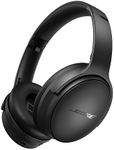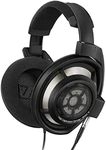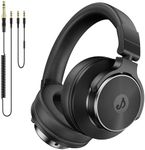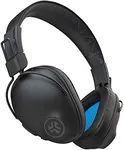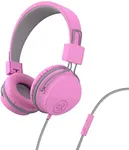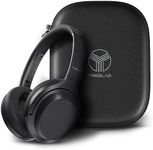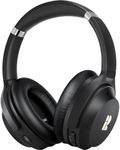Buying Guide for the Best Audiophile Headphones
Choosing the right audiophile headphones can be a rewarding experience, especially if you are passionate about high-quality sound. Audiophile headphones are designed to deliver superior audio performance, making them ideal for music lovers who want to hear every detail in their favorite tracks. When selecting the perfect pair, it's important to consider several key specifications that will impact your listening experience. Understanding these specs will help you make an informed decision and find headphones that best suit your needs and preferences.Frequency ResponseFrequency response refers to the range of frequencies that headphones can reproduce, typically measured in Hertz (Hz). This spec is important because it determines how well the headphones can handle different types of sounds, from deep bass to high treble. A wider frequency response range means the headphones can reproduce more of the audio spectrum, providing a richer and more detailed sound. For most audiophiles, a range of 20 Hz to 20,000 Hz is ideal, as it covers the full spectrum of human hearing. If you enjoy genres with deep bass, look for headphones with a strong low-end response. Conversely, if you prefer classical or acoustic music, a balanced frequency response with clear mids and highs will be more suitable.
ImpedanceImpedance is a measure of electrical resistance and is expressed in ohms (Ω). It affects how much power is required to drive the headphones. Low impedance headphones (below 50 ohms) are easier to drive and can be used with portable devices like smartphones and laptops without needing an external amplifier. High impedance headphones (above 50 ohms) typically require more power and are best used with dedicated headphone amplifiers to achieve optimal sound quality. If you plan to use your headphones with portable devices, choose low impedance models. If you have a high-quality audio setup with an amplifier, high impedance headphones will provide better performance.
Driver TypeThe driver is the component inside the headphones that converts electrical signals into sound. Different types of drivers can affect the sound quality and characteristics. Dynamic drivers are the most common and offer a good balance of performance and cost. Planar magnetic drivers provide more accurate sound reproduction and are favored by audiophiles for their clarity and detail. Electrostatic drivers offer the highest fidelity but require specialized equipment and are usually more expensive. Consider your listening preferences and budget when choosing the driver type. Dynamic drivers are versatile and suitable for most users, while planar magnetic and electrostatic drivers are ideal for those seeking the highest audio quality.
SoundstageSoundstage refers to the perceived spatial location of sound sources when listening to headphones. A wide soundstage creates a sense of space and depth, making it feel like the music is coming from all around you rather than just inside your head. This spec is important for genres like classical, jazz, and live recordings, where spatial accuracy enhances the listening experience. Open-back headphones generally offer a wider soundstage compared to closed-back models. If you value a realistic and immersive listening experience, opt for headphones with a wide soundstage. However, if you need isolation from external noise, closed-back headphones might be a better choice despite their narrower soundstage.
Comfort and Build QualityComfort and build quality are crucial for long listening sessions. High-quality materials and ergonomic designs ensure that the headphones are comfortable to wear for extended periods. Look for features like adjustable headbands, cushioned ear pads, and lightweight construction. Build quality also affects durability, so choose headphones made from robust materials like metal and high-grade plastics. If you plan to use your headphones for long periods, prioritize comfort and build quality to avoid discomfort and ensure longevity. Try on different models if possible to find the best fit for your head and ears.
